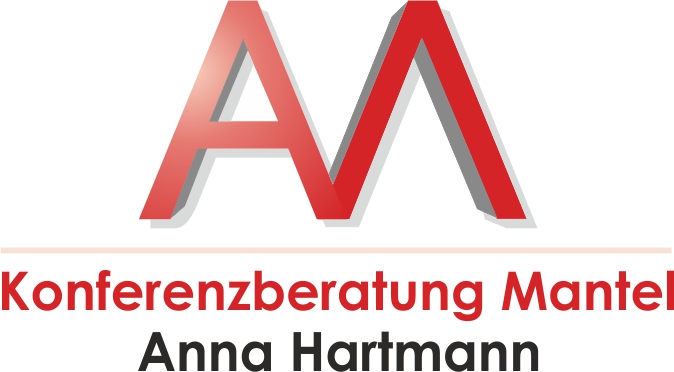Conference Consultancy Mantel (Anna Hartmann) provides flexible interpreting services for your event. You have the choice between the types of interpreting described below. We discuss the options available for your conference and select the fitting solution for your project. Conference interpreting includes no less than four types of interpreting. Our interpreting master all of these perfectly.
Simultaneous Interpreting
Today, simultaneous interpretation is the most frequently used type of interpreting. The interpreters sit in a soundproof booth and hear via their headsets, what is being said in the conference room. They render the message simultaneously in the target language, using the microphone which is installed in the interpreters’ switchboard in the booth. The target-language audience listens to the interpretation via earphones. Some conference venues have pre-installed interpreting booths. In other cases a is installed by a specialized conference equipment provider and operated by a tecnician during the conference. In simultaneous interpretation the interpreters work in teams of two (sometimes three) interpreters per language and alternate every 20 to 30 minutes.
Today, simultaneous interpretation is the most frequently used type of interpreting. The interpreters sit in a soundproof booth and hear via their headsets, what is being said in the conference room. They render the message simultaneously in the target language, using the microphone which is installed in the interpreters’ switchboard in the booth. The target-language audience listens to the interpretation via earphones. Some conference venues have pre-installed interpreting booths. In other cases a is installed by a specialized conference equipment provider and operated by a tecnician during the conference. In simultaneous interpretation the interpreters work in teams of two (sometimes three) interpreters per language and alternate every 20 to 30 minutes.
Consecutive Interpreting
Consecutive interpreting is the supreme art of interpretation – the interpreter takes notes during a speech and afterwards renders the message in the target language. This type of interpreting can cover speeches of up to 15 minutes. Only highly skilled and qualified interpreters master this type of interpreting which requires a sophisticated note-taking tecnique. Typically, consecutive interpreting is used for after-dinner speeches and speeches to a large audience.
Consecutive interpreting is the supreme art of interpretation – the interpreter takes notes during a speech and afterwards renders the message in the target language. This type of interpreting can cover speeches of up to 15 minutes. Only highly skilled and qualified interpreters master this type of interpreting which requires a sophisticated note-taking tecnique. Typically, consecutive interpreting is used for after-dinner speeches and speeches to a large audience.
Liaison Interpreting
This type of interpreting is used for negotiations and smaller meetings. In liaison interpreting, the interpreter sits at the table, takes notes and relays what has been spoken after a short speech or sentence-by-sentence, switching between the two languages used. This type of interpreting requires the interpreter to bring to the table not only language skills, but also tact and good instincts.
This type of interpreting is used for negotiations and smaller meetings. In liaison interpreting, the interpreter sits at the table, takes notes and relays what has been spoken after a short speech or sentence-by-sentence, switching between the two languages used. This type of interpreting requires the interpreter to bring to the table not only language skills, but also tact and good instincts.
Whispered Interpreting
In whispered interpreting or chuchotage the interpreter sits or stands next to or behind the listener and renders the message by whispering into his or her ear. This type of interpretation can be used for an audience of up to two people. It is called for, whenever the room cannot accomodate an interpreting booth. It is not recommended for long conferences, because it entails considerable strain for the interpreter’s voice. Moreover, the target-group audience, the speaker and other participants might feel disturbed by the additional voice that will be distinctly audible in the room. Again, interpreters work in teams of two, because like in simultaneous interpreting, chuchotage requires a very high level of concentration.
In whispered interpreting or chuchotage the interpreter sits or stands next to or behind the listener and renders the message by whispering into his or her ear. This type of interpretation can be used for an audience of up to two people. It is called for, whenever the room cannot accomodate an interpreting booth. It is not recommended for long conferences, because it entails considerable strain for the interpreter’s voice. Moreover, the target-group audience, the speaker and other participants might feel disturbed by the additional voice that will be distinctly audible in the room. Again, interpreters work in teams of two, because like in simultaneous interpreting, chuchotage requires a very high level of concentration.
Translator, linguist or interpreter? There are several denominations for conference interpreters (which is the correct name for our profession); however, the essential feature is the quality we deliver. And you as our customer are entitled to nothing less!

